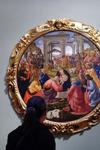Mimi Yiengpruksawan
A.B., Occidental College
M.A., UCLA
Ph.D., UCLA
Mimi Yiengpruksawan completed graduate work at UCLA with a Ph.D. in Japanese art studies awarded in 1988. For her undergraduate degree at Occidental College she majored in Medieval European art, followed by M.A. study at UCLA in the combined fields of East Asian (primary) and African, Oceanic, and Pre-Columbian (secondary). Her methodological purchase has always been cross-regional and interdisciplinary in nature, with a strong interest in the impact of the nonlocal and the catastrophic (ecological, environmental) on cultural production. She brings this to bear in particular in her work on the visual and material cultures of Kyoto ca. 1000, a pivotal moment in Japanese history and in the formation of Japanese cultural identity. Most recently she presented on this topic at the Kunsthistorisches Institüt in Florence in a paper entitled “Environment, Contingency, and Improvisation at the Heian Court in the Time of the Supernova” for the international conference Ecologies, Aesthetics, and Histories of Art organized by Hannah Baader, Sugata Ray, and Gerhard Wolf in December 2015.
Yiengpruksawan is in the process of completing a book manuscript entitled Michinaga’s Peacocks: A Japanese World in Transition. She has been working on this project for more than a decade and expects, on its publication, to engage the field of Japanese art studies in a rethinking and reimagining of the world that gave rise to The Tale of Genji and Yorimichi’s Phoenix Hall at Byōdōin. While most of her work to date has focused almost entirely on Heian Japan, and specifically on Buddhist art and culture from a cross-border perspective, she has recently returned to a longstanding research interest in the “Nanban moment” when an multi-faceted visual and material culture emerged in Japan at the intersection of art, literature politics, religion, science, commerce, war, and diplomacy in the wake of European contact in the early modern period. She presented on this topic in a paper entitled “Ocean’s Away: Some Thoughts on Baroque Vision and Maritime Imagination in Japanese World Maps circa 1600” for the conference Between the New World and Asia: Trans-Pacific and Trans-Atlantic Exchanges in the Early Modern Era organized by Dennis Carr and Thomas B. F. Cummins at Harvard in September 2015.
Courses taught by Yiengpruksawan encompass a variety of topics and approaches in Japanese and Buddhist art and architecture, with the goal of encouraging students to develop, not only familiarity with the arts of Japan and East Asia, but a grasp of the entangled nature of cultural exchange and artistic inspiration in world history.
